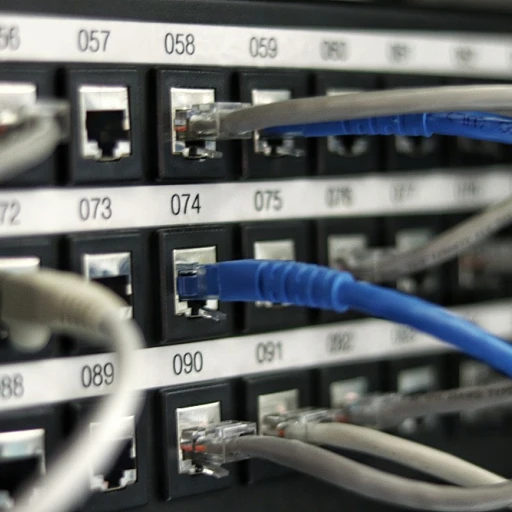Understanding workflow automation
What is workflow automation?
Workflow automation is all about getting those pesky repetitive tasks outta the way so you can focus on what really matters. Imagine not having to manually update your Airtable every time a new Gmail comes in or entering data into Google Sheets one row at a time. Automation tools like zapier and make make this kind of sorcery possible by connecting different apps and services.
Why you need it
It’s no secret that time is money. By automating mundane tasks, you free up time for more important stuff. Whether it's small business owners or large enterprises, everyone wants a slice of that efficiency pie. For example, marketers can automate social media posts and email campaigns. Customer service teams could automate support ticket sorting. The real beauty? You'll save time and reduce human errors.
How it works
The magic behind workflow automation involves setting up workflows—or sequences of tasks—that are triggered automatically. Think of it like setting up a domino effect. You start by connecting your apps and services, and then define the triggers and actions. For instance, a new entry in Google Sheets could trigger a message to a specific Gmail account. Zapier calls these sequences “Zaps” while Make refers to them as “Scenarios”. Both platforms offer a wide range of integrations to help you connect the dots seamlessly.
Why it’s popular
With more than 3,000 apps and services available on Zapier, and Make not far behind, the flexibility and customization are massive perks. Automation platforms are becoming day-to-day tools for many professionals, speeding up workflows and reducing the need for manual intervention. According to a report by MarketsandMarkets, the global workflow automation market size is projected to grow from $3.1 billion in 2020 to $18.45 billion by 2027, highlighting the sky-high demand.
Case study: how a small business flourished
Take, for example, a small e-commerce business that leveraged Make for their order processing. By automating the entire workflow—from order placement to inventory update—they cut down processing time by 70%, allowing them to handle more orders without needing additional staff. They also utilized advanced features like error handling to ensure nothing fell through the cracks. The bottom line? Increased efficiency and substantially reduced operational costs, which ultimately led to higher profits.
An overview of make and zapier
Defining the automation tools: make and zapier
Understanding the tools at your disposal is crucial. With Make (previously known as Integromat) and Zapier, you're entering a space where you can connect various apps to automate your workflows. But they cater to different user needs and complexities.
Features and flexibility
Zapier is more user-friendly and aimed at non-technical users. It supports over 3,000 apps and offers a simplified way to automate tasks with its 'zaps,' which don't require any coding. In fact, 95% of Zapier users claim they can set up a zap in under 5 minutes.
Make, on the other hand, offers advanced options for those who need more control and complex multicore workflows. It has a robust interface for creating and managing these workflows, and you can even use code if necessary. A 2023 survey from G2 found that 85% of Make users appreciated its advanced features and flexibility.
Integration capabilities
While Zapier boasts a wide range of integrations, Make offers deep-rooted control over data transfer and error handling. For instance, with Zapier, you can easily connect popular apps like Google Sheets, Gmail, and Airtable without much hassle. However, if you're working with complex data operations and APIs, Make provides the detailed customization and precision you might need.
Customization and user interface
Zapier's user interface is straightforward, prioritizing ease of use. This makes it perfect for small businesses or individuals looking to automate repetitive tasks quickly. Meanwhile, Make's interface is a tad more intricate but offers greater customization for those willing to put in the extra time. User interface and customization are where the two tools see a real divergence.
Platform Versatility
Make's capabilities extend into intricate realms such as complex multi-step operations and advanced error handling. It's equipped to handle large-scale data transfer with precision. As a case in point, Make can efficiently orchestrate workforce automation involving multiple intricate steps and error-proof execution. Zapier, while not as advanced in this area, provides a no-fuss platform for smaller, straightforward tasks.
Comparing features: make vs zapier
ease of use: user-friendly interfaces
One of the most persuasive factors for choosing an automation tool is its user interface. Indeed, a tool's ease of use plays a pivotal role in user satisfaction and efficiency. Let’s dissect how make and zapier compare on this front.
make (previously Known as Integromat) prides itself on providing a visual builder. It lets users drag and drop elements, creating visually intuitive workflows. Many users highlight the tool’s ability to depict complex automations as visually understandable flowcharts. This feature can significantly lead to reducing the learning curve, especially for new users
Contrastingly, zapier leans towards a less visual but more straightforward approach. Its user interface focuses more on a step-by-step linear process, which some users find more intuitive for simpler workflows. The platform offers a wealth of templates known as 'Zaps,' which can be selected and customized with minimal effort
the automation hierarchy: simple to complex workflows
Now, let’s switch gears to how each tool handles the transition from simple to complex workflows.
With make, users can build very intricate and complex automations. The platform offers advanced error-handling options, such as routers and iterators, which are crucial for ensuring data integrity in more extensive workflows. Plus, Make offers a feature-rich free plan, which grants users access to most of these advanced capabilities without spending a dime.
Conversely, zapier offers a more linear and simplified approach to automation. For many users, this is its strength, particularly when automating straightforward and repetitive tasks. zapier also provides error notifications and basic pathways for managing task failures, but it lacks some of the intricate controls available in make
integrations galore: connecting your apps
Both make and zapier boast impressive integration capabilities, connecting a wide range of apps and services. However, the scope and flexibility of these integrations can vary
make supports a vast array of application integrations, including popular choices like Google workspace, Airtable, and Gmail. The platform is specially noted for its robust API integration support, which allows for extra flexibility and customization
On the other hand, zapier shines with its seamless integration with over 3,000 apps, including heavyweights like Google sheets, Zoho, Google calendar, and Aws. However, it's worth noting that some advanced features and integrations come under higher-tier plans.integration flexibility.
automation speed: who wins the race?
When it comes to the timing and reliability of tasks, speed is of the essence
zapier offers a respectable five-minute update time on its free plan, which can be critical for timely automations. In contrast, make offers immediate, real-time updates even with its free plan, which provides a notable edge for time-sensitive tasks
Users often praise zapier for its reliable performance and minimal downtime. make, with its superior task update speed, also garners positive reviews but sometimes faces critiques for occasional complexity in setup
Pricing plans: which one offers more value?
Evaluation of pricing models
Pricing can make or break your decision when choosing between Make and Zapier for workflow automation. Let's unpack what each platform offers and how they align with your budget and needs.
Make's pricing structure
Make, formerly known as Integromat, offers a variety of plans that cater to different user levels. The Free plan gives you generous access, enabling up to 1,000 operations per month, along with basic features. If you require more advanced functionalities, the Core plan is priced at $9 per month, providing 10,000 operations. Professional users might opt for the Pro plan at $29 per month, which comes with 100,000 operations. And for businesses with significant automation needs, the custom-tailored Enterprise plan is available.
Make also offers a notable feature in its higher-tier plans: minute update time. This allows for faster automations, which is crucial for time-sensitive workflows.
Analyzing zapier's pricing
Zapier offers a similar tier structure but is generally considered more expensive. Zapier's Free plan includes up to 100 tasks per month. For more robust needs, the Starter plan at $19.99 per month allows for up to 750 tasks. The Professional plan at $49 per month offers unlimited zaps and complex workflows with a full set of features, including priority support. Meanwhile, teams and businesses can look at the Team plan for $299 per month, or the Company plan with custom pricing.
Zapier's key selling point in terms of value is its error handling and conditional logic, included in the higher-tier plans, which make it suitable for complex multi-step workflows.
Measuring feature-to-cost value
When comparing the two platforms, it's vital to look beyond the numbers and focus on the feature sets. Zapier tends to offer more robust integrations and advanced features like error handling and advanced customizations. However, Make's plans often provide more operations at a lower price, which can be a game-changer for smaller businesses or individual users.
Both platforms have free plans that let you dip your toes in before making a financial commitment. For a smaller price, Make offers more operations, positioning it as a cost-effective solution for users who need to begin automations on a budget.
Expert recommendations
Experts generally recommend Zapier for environments where reliability and advanced error handling are essential—think of it as the go-to for complex workflows involving multiple applications. On the other hand, Make is often favored for its affordability and volume of operations, meeting most of the needs of individuals and small to medium-sized enterprises.
Conclusion: which to choose?
Your choice between Make and Zapier really boils down to your specific needs and budget. If cost is a significant factor and your workflows are not overly complex, Make offers more bang for your buck. However, if complex workflows and advanced features are crucial, Zapier will likely offer more value despite its higher cost.
Use cases: real-world applications
Automating marketing campaigns
Both Make and Zapier bring tremendous value to marketing teams, allowing the automation of repetitive tasks like email campaigns, social media posts, and lead generation. According to a study by Statista, companies that leverage automation have seen a 14.5% increase in sales productivity and a 12.2% reduction in marketing overhead costs. While Make offers detailed workflows to handle complex campaigns, Zapier simplifies it with user-friendly zaps that quickly connect apps like Google Sheets, Gmail, and social platforms.
Streamlining customer support
Customer support can be seamless with automation tools. Zendesk reports show that 71% of consumers expect companies to communicate in real-time. Make and Zapier can automate helpdesk queries, routing them efficiently. Make's advanced features, including error handling, ensure data isn't lost while moving across systems like Zoho and Google Workspace. Zapier's integrations with popular support tools like Zendesk or AWS enable instant responses to customer inquiries.
Efficient data management
Data management is another significant use case. For instance, Make's capability to create complex multi-step workflows shines when syncing massive data sets between systems like Airtable and Google Calendar. Comparatively, Zapier users appreciate its minute update time for tasks. According to a 2022 survey by Gartner, 63% of businesses adopted automation tools mainly for data management, cutting down their manual entry efforts by 81%.
Managing e-commerce operations
For e-commerce businesses, automation helps streamline operations. An insider revealed on Reddit how using Make boosted their efficiency by 30% due to intricate workflows connecting different sales and inventory platforms. On the other hand, Zapier users favor its ease in automating tasks like order confirmations and shipping notifications.
Case study: streamlining workflows at ABC Corp.
ABC Corp, a mid-sized tech company, reported a 28% increase in overall productivity after adopting Make's automation for internal approval processes and client interactions. Similarly, a case on Google highlighted a small business leveraging Zapier to automate their entire sales funnel, thus saving significant time and boosting their ROI.
Handling personal tasks
On a personal note, many users find Make and Zapier ideal for automating mundane personal tasks. Automated reminders in Google Calendar, syncing notes across devices, and managing individual projects are common uses. The free plans offered by both platforms allow individuals to explore basic automations without additional costs.
User experiences and reviews
Real feedback from those who use make and zapier daily
When it comes to determining which automation platform is best, listening to actual users can be invaluable. Both make and zapier have loyal followings, but their users point out distinct benefits and issues.
According to G2 Crowd, zapier scores an impressive 4.5 out of 5 based on over 5,000 reviews. Users often highlight its user-friendly interface. One reviewer stated, "Zapier has simplified our workflows; it's reliably smooth and reduces manual tasks significantly." However, there are some critiques: the most common being the price, as zapier may become costly with extensive use. In contrast, it can become complex for complex workflows.
In comparison, make (formerly Integromat) is praised for its advanced flexibility. Its users love the error handling feature, which allows for detailed monitoring and fixing of automation hiccups. Reviews from Capterra give Make a solid 4.7 out of 5, highlighting its cost-effectiveness. One review notes, "Make offers advanced features we can't find anywhere else at this price point. It handles our complex workflows with ease." Some users, however, mention that learning Make's interface can be challenging initially.
Strengths and weaknesses through user lenses
zapier offers over 3,000 app integrations, making it suitable for businesses focusing on wide-ranging app connectivity. Despite having a free plan, it comes with limitations like a 15-minute update time, which might not work for those needing instant data sync. In contrast, Make's advanced features are perfect for tech-savvy enthusiasts wanting deep customization. Its free plan is more generous, though its app integrations stand at around 1,000.
Regarding error handling, Make is often seen as the more robust choice. The detailed error logs help users maintain automation integrity. A Make user shared, "I appreciate the transparency with their error logs, minimizing downtime dramatically." On the other hand, zapier's simplicity makes it ideal for beginners or businesses with uncomplicated needs.
Contextual comparison through case studies
Take Google Sheets integrations, for instance. A marketing agency using zapier might automate data collection from Google Forms into Google Sheets, simplifying the process without needing to know coding. Meanwhile, a tech startup might prefer Make for its ability to handle complex operations, like connecting Airtable databases to AWS for real-time project management.
Similarly, for e-commerce tasks, an online store integrating Shopify with Google Analytics could rely on zapier's ease-of-use for straightforward reporting. Conversely, a business needing multi-step automations involving inventory checks, supplier notifications, and customer updates may benefit more from Make's advanced capabilities.
Community insights and practicality
The choice between make and zapier doesn't solely influence efficiency; it shapes your business's future. A Reddit thread discussing their merits demonstrated how community experiences align with individual business needs. One user commented, "Zapier was our go-to till our operations scaled. Switching to Make was a game-changer for handling complex tasks."
With both platforms continually updating, it's wise to stay abreast of community feedback. The choice becomes clearer as you understand the specific needs, budget considerations, and complexity of workflows your business requires.
Expert insights: future trends in workflow automation
The rise of AI in workflow automation
In the ongoing battle of make vs zapier, one trend that stands out is the integration of artificial intelligence (AI) and machine learning (ML) into workflow automation. These technologies are not just buzzwords; they are becoming critical components of advanced automation platforms.
According to Gartner, by 2024, AI will be integrated into every aspect of workflow automation, with over 50% of tasks in large enterprises being automated. This will save companies both time and money, while increasing efficiency and reducing human error (Gartner).
Data-driven decisions and predictive analytics
AI and ML are driving the ability to make data-driven decisions within these tools. Zapier and make are not far behind in integrating predictive analytics capabilities. For instance, with AI, you can predict task outcomes, prioritize workflows, and even identify potential bottlenecks before they become problematic.
According to a McKinsey report, companies using AI for workflow automation have seen a 30% increase in productivity. This means better utilization of human resources as they focus on more strategic, less repetitive tasks.
The role of natural language processing (NLP)
Natural Language Processing (NLP) is also making waves in workflow automation. This technology allows for better user interaction with automation tools. For example, you can now set up workflows by simply describing the task you want automated. Zapier and make are both working on enhancing their NLP capabilities to make their platforms even more user-friendly.
Experts like Dr. Andrew Ng, Co-founder of Google Brain, believe that NLP integration will be a game-changer in workflow automation, allowing non-technical users to create complex workflows easily (Andrew Ng).
Advanced error handling
An essential feature for any robust automation tool is advanced error handling. Both make and zapier have been making strides in this area. AI-driven error detection and resolution are helping to minimize disruptions in automated workflows. Imagine a system that automatically detects an error, diagnoses the issue, and proposes a fix – all without human intervention!
A report by Forrester highlights that companies using advanced error handling in their automation platforms have reduced downtime by nearly 40%, ensuring that workflows run smoothly and efficiently.
User-centric design and customization
The future of workflow automation is also leaning heavily towards user-centric design and customization. Tools like make and zapier are focusing on creating highly customizable user interfaces. This means that users can tailor their workflows to meet specific needs without needing extensive technical knowledge.
A study by IDC reveals that user-centric design can increase user adoption rates by up to 60%, making it a vital aspect of any automation platform.
Convergence of low-code and no-code platforms
The final trend to highlight is the convergence of low-code and no-code platforms with workflow automation tools. This allows even those with minimal technical expertise to create complex workflows. Zapier and make are at the forefront of this movement, offering drag-and-drop interfaces that simplify the automation process.
John Bratincevic, a Senior Analyst at Forrester, notes, 'The rise of low-code and no-code platforms is bringing workflow automation to the masses, enabling a new level of democratization in technology' (Forrester).
In conclusion, the future trends in workflow automation are clearly moving towards AI, NLP, advanced error handling, user-centric design, and the convergence of low-code and no-code platforms. As the battle of make vs zapier continues, these trends will play a crucial role in determining which platform comes out on top.
Making a choice: which automation tool is right for you?
Evaluating your workflow needs
Choosing between Make and Zapier boils down to understanding your specific workflow requirements. If you're handling complex multi-step automations, error handling, and extensive backend operations, Make might serve you better with its granular control and visual scripting. On the other hand, if you need a more straightforward solution for a wide range of apps and integrations, Zapier's user-friendly interface can help you create basic automation without breaking a sweat.
Weighing the costs
Your budget can also guide your choice. Consider the pricing breakdown we detailed earlier: Make offers advanced features even on the free plan, while Zapier may require you to upgrade to access comparable functionalities. Users love that Make's offers are often seen as more cost-effective for handling more complex workflows without a significant price leap.
What the users say
User reviews echo these features. On platforms like Reddit and community forums, many highlight Zapier's ease of use for simple tasks. Still, Make garners praise for handling intricate workflows, with community feedback favoring its flexibility and depth.
The expert perspective
Experts agree that the future of workflow automation platforms will include capabilities for integrating a wide range of apps and streamlining complex tasks. Erik Girouard, a leading analyst, notes that companies are looking for tools that not only handle automation but also offer strong error-handling mechanisms and time-saving features. He suggests leaning towards Make if your needs align with these advanced capabilities.
Final thoughts: which one fits your needs?
In summary, the choice between Make and Zapier hinges on your specific needs, budget, and workflow complexity. While Zapier shines for its ease-of-use and seamless integrations, Make is the go-to solution for those demanding more robust automation capabilities. Consider trialing both platforms using their free plans to determine which aligns best with your operations.











